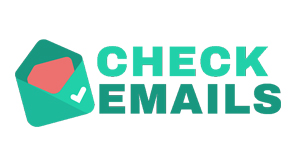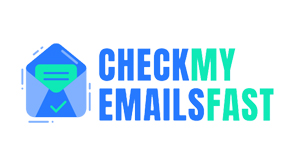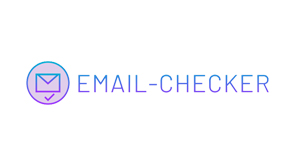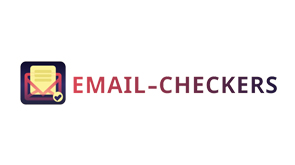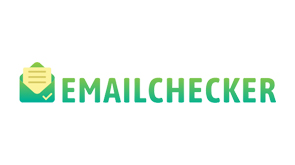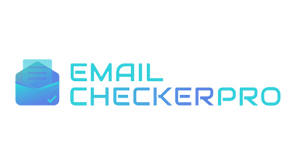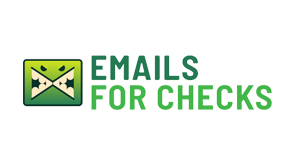Considering the functionality of email checkers
#1 check-emails.com
#2 valid-email-checker.com
#3 check-my-email.com
#4 email-checker-online.com
#5 emailchecker.biz
#6 emailcheckerpro.com
#7 check-if-email-is-valid.com
Comparison Reviews by Industry Experts
Checking the existence and correctness of the email address you’re using to send a letter is necessary to make sure your letter is going to be received and seen (by a person, not robot). When you work with only a few emails per day or week, such verification can be actually done manually by contacting with your recipients and asking them if anything is wrong. But when you work with hundreds, thousands, or tens of thousands of emails every day or month, email checker results become a vital solution for you. Below, we are investigating how to check if an email is valid in more detail.
What is the e-mail checker?
An email checker is a tool, which works mostly online that allows verifying the existence of the submitted email address. You can check email online for single emails and for bulk checks, when from hundreds to millions of addresses are being checked during one procedure.
Free email verifier exists (and there are many of them) but it has daily, weekly, or monthly limits. For instance, you can’t verify email more than 10 times during the period. Paid checks (also including bulk ones) do not usually impose any limitations and offer a pay-per-email approach, where every individual string of data that is being verified costs very cheap, so even tens of thousands of checked emails cost only a few dozen dollars or something like that.
The principle of work of email verifying software is explained in detail below, while we only say that it is very easy to start the verification procedure – simply copy-paste the required address and press a corresponding button in the interface.
How the email checker works technically and procedurally
In order to give you the results of email verification, the tool does a pretty impressive list of checks. It must be said that down below, we are submitting the ideal list, which may be significantly different in each particular verifier.
- As you press the ‘Go’ or akin-named button in the interface, the first check is the correctness of syntax. Each email address looks like ‘my-mail@mail.com’ and so all parts should be there, including the symbol @. It also must look filled with sense, not like ‘iBWQ*)RgoU_ALSfalk.,m@89q3b5.2biz2’, as with a high degree of probability, it is fake, dummy, spammy or one-time address. So you check if the email is real like this swiftly and you don’t want either of those bad ones in your mailing list.
- A sequence of ping commands is formed and sent to the server so to make it not only respond that it exists but also provide the so much needed specific information (this is the main basis for the formation of the end result):
- whether the email domain (server) exists
- does it accept all letters coming to it independently of existence or non-existence of specific email address or it declines letters destined for non-existing email addresses
- if this server or the checked address have ever been noticed in spamming (email spam test) or phishing, and if they are added to various black, gray, or white lists
- is it a service offering fraudster or one-time emails
- if the server cooperates during multiple checks or remains in silence
- is this a POP3 or IMAP client, and if it passes through the IPv4/IPv6/MX email verification (a technical thing needed for a more reliable result of the check).
The result is formed based on the consideration of each answer with three more probable outcomes: ‘good’, ‘bad’, or ‘no-response’. You’re only interested in the first outcome. The entire procedure above is also known as DNS and SMTP confirmation.
3. If the verified address is known to belong to some person and has ever been disclosed online – for instance, lookup of whether it is found in Google search if it is connected to working profiles (like Gmail checker, Behance, LinkedIn or something like that – there are actually tens of such job and freelance platforms) or depicted on some website as a contact one. If yes, then, highly likely, it is reliable.
4. After that, the report is formed about does this email exist, which in most cases boiled down to ‘Ok’ or ‘Not OK’ result of verification. But various email checkers are able to form a thorough and very detailed technical report, giving not only the black-or-white result but also providing different shades of gray in between, generating the percentage of probability of the badness or goodness of each email. This is sometimes useful.
You have to bear in mind that the result of the check may dramatically differ across various email checkers. One says the address is good, another says it is bad, a third one is not sure… We recommend you use 3-4 different email checkers so just to make sure the results you obtain are really worthwhile and can be applied.
Who are the principal users of email checker?
There is an extensive list of email tester’s users:
- Private individuals and freelancers, who communicate online a lot and have over 100 or 1,000 contacts. As, due to the small flow of clients and much more personal approach to every client, writing a highly personal letter to everyone just to get zero delivery rate is a bad decision, so they have to check if the email is valid upfront to largely save time.
- Medium and large businesses, which launch their mailing campaigns periodically and have an extensive database of users, so they have to clean it up before each and every campaign starts.
- The companies that offer their mailing services in a professional manner – they send millions of emails monthly, and they simply cannot allow the high bounce rate in their campaigns.
- Anyone who would like to keep his or her mailing database up to date.
- Owners of automated systems, such as CRM (by the way, Gmail CRMs are quite popular tools on the market), who operate large databases of their clients and form highly individualized offers or campaigns, which require sending informational letters.
What is API and what it is used for in email checkers?
The API is the interface, through which third-party companies are able to reach the functionality of some email address checker. We’ve seen email checkers that provide API the same as we’ve seen those that don’t.
The presence of API allows anyone to connect to an email checker through his or her system and enrich the functionality of processes. This is profitable for their clients as it gives extra value.
Are there any tangible benefits of using an e-mail checker?
Yes, and they are as follows:
- Lowering the bounce rate after you check email. Nearly every creator of an email checker says that using their tool allows lowering the bounce rate of emails to something in the midst of 0%… 10%. The un-cleared database will have a significantly higher outcome: about 50%… 90%. That is, using email validation, you increase the delivery rate to your customers and prospects, with a high percentage of responses from their side. Surely, after the cleaning, you exclude a lot from your database (sometimes, cutting it in half or even more). But the purity that you receive in the end will largely economize your budget.
- Money. Your budget is, actually, the cornerstone for this entire undertaking – every letter that you send costs you money. You either spend time on sending it and thus, pay a salary for this working time to an employee who does it. Or you hire a profile company, which charges you for each sent email. So, sending less but with bigger performance is what you need to save your money. Anyway, what you pay for checking emails is always lesser than what you pay for sending.
- Saving time. Sending 100 letters with 5 replies is always longer than sending 30 letters with 5 replies, no matter if this is an automated or manual procedure.
- Also, your efforts to do that stay within the expected volume. This is especially a thing when you have tens or hundreds of thousands of emails to send.
- You have your database updated and clean, which is immediately good for the next campaigns.
FAQ about email checkers
1. Will email address verification guarantee 100% delivery rate?
No, and pretty much no email checker says it will deliver you this result. The reason is that many verified mailing domains do not wish to cooperate or provide inconsistent data when being verified.
2. Do I have to know how to program to use API?
Yes, as a rule. If you want to connect API to your system but don’t know anything about coding or programming, then it is very simple to hire a programmer-freelancer who will do it for you.
3. Is the email address owner informed about being checked?
No, as this is a technical routine, which isn’t resulting in sending letters to anyone, so all checked people stay unaware.
